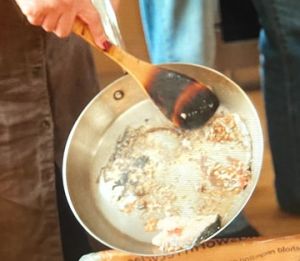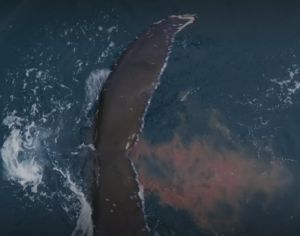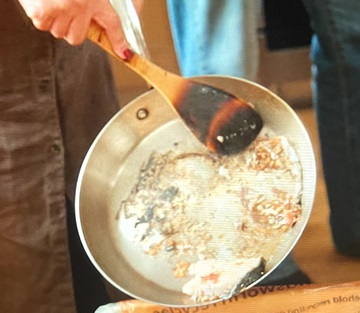Green-washing: The Scottish Green Party has written to the Rural Affairs secretary calling for urgent talks about the Scottish salmon farming industry. This is surprising since the one thing that the Scottish Green Party appear extremely reluctant to do is talk’ except to those who support the Green Party’s views.
The Green Party’s Rural Affairs spokesperson, Ariane Burgess MSP writes that “increasing numbers of farmed fish deaths, disease and suffering in Scotland’s waters are seeing conditions deteriorate and delays in delivering hope for changes demanded by experts”. However, her comments are somewhat puzzling. Which conditions are deteriorating and how and what are these changes demanded by experts. What is more is who are these experts and what is their expertise? It is all rather vague which is extremely typical when it comes to those criticising the salmon farming industry. Unfortunately, Ms Burgess is very reluctant to answer such questions and as an MSP, it might be hoped that she would be willing to listen to both viewpoints.
Looking back at news stories about Ms Burgess, her alliances appear to be with groups such as the Coastal Communities Network who views on changes to the salmon farming industry appear to be only to close it down. Certainly, when I offered to speak to the CCN aquaculture group, about sea lice, they immediately refused saying that anything that I might say would not alter their view. The Green Party appear to have adopted a similar stance.
Ms Burgess also writes that “communities and environmental campaigners are becoming more frustrated with what they see as a lack of progress”. Could it be that their demands have no real basis and thus the progress they seek will never happen? She has raised a number of issues in her letter, and she expresses a hope that there is a possibility of working together to deliver urgent, meaningful action required to address the environmental impacts of the industry and reduce fish farmed (sic) deaths, disease and suffering. To the best of my knowledge the industry has always been willing to work with government and communities, but the concerns must be real ones. For example, images and videos of sick fish are shared on social media giving the impression that these represent all the fish on farms. Yet, it is clear from the image or video that these fish are few in number. A real question is whether an industry should be closed down because a few fish out of thousands or tens of thousands appear to be suffering the impacts of lice. Fish like these also occur in the wild but are rarely seen because they succumb to predation etc. There are natural biological explanations for the patterns seen in videoed fish but those opposed to salmon farming aren’t interested in hearing the details. The same applies to how mortality can be reduced. …and it can be but, there is a total unwillingness not just of the critics but also of the regulators to discuss how?
The Rural Affairs spokesman also wants to minimise harm to wild salmon, but interestingly she has said nothing about the harm to wild salmon stocks from the wild salmon sector. The Marine Directorate record the actual number of fish killed every year in the name of sport In but there is little evidence, if any at all, to show that salmon farms are responsible for the deaths of wild fish unless Ms Burgess has that evidence.
Finally, she writes that there must be a strategic plan in place to avoid long term environmental damage from salmon farms. Ms Burgess has only been an MSP since 2021 so she may not be aware of the history of salmon farming in Scotland. Salmon farms have been operating in significant number for about forty years. After all this time, there must be surely clear evidence of long-term environmental damage if it exists. Of course, there is an impact on the seabed directly under the farms, but this is a tiny area, and any impact can be reversed through fallowing so cannot be considered to be long-term damage. Why would there be a need for a strategic plan to combat long-term environmental damage when it just isn’t happening. Only the Green Party seems to know.
If the Green Party want Scotland to have a thriving and sustainable salmon farming industry, then perhaps they need to speak to a wider range of people than those who only have a blinkered self-interest.
Firing line: Vicky Allan, a senior features writer for the Herald newspaper has said that having watched two international documentary series featuring segments on salmon farming it appears that the Scottish salmon industry is under fire and that it is now at the point of having to dramatically change or die.
Her comments were published in the opinion section of the newspaper and that is her opinion, and her opinion comes as no surprise having written a number of negative articles on salmon farming in recent months. She is well qualified to say that the industry is under fire as she is one of those who are taking aim. It might be hoped that as a journalist she would be willing to hear all views and report accordingly but lately, and in my opinion, she is more likely, for reasons best known to herself, to be reporting on her own views.
She writes that Netflix’s ‘You Are What You Eat’ frames salmon farms as part of the global health and environmental problem alongside the likes of intensive pig rearing, chicken farming and intensive cattle rearing. However, what Vicky Allan has failed to realise is that although she says that the documentary is anti-meat and comes out against fishing and fish farming too, the series was made in association with the Vogt Foundation, an organisation that aims to protect animals and promote plant-based products. The Vogt Foundation also provided $250,000 to help fund another Netflix documentary the Game Changers to challenge the key myths underlying the consumption of animal foods whilst promoting a strong, just, and sustainable plant-based lifestyle.
Inevitably, a series aimed at ultimately promoting a plant-based lifestyle was never going to be complimentary about salmon and salmon farming. It is a pity that the Herald’s senior features writer could not go out and find out whether the information provided in the documentary was true or not but then if it was shown to be untrue, there would be no need for her to write her opinion piece,
Non-stick: The section on salmon farming in the new Netflix documentary series ‘You Are What You Eat’ lasts for only 7.3 minutes out of a total series length of 198 minutes and yet it is surprising how much misinformation was promulgated in such a short time. But given that the two main ‘experts’ who appeared in the documentary were activists Don Staniford and Alexandra Morton, there should be no reason to be surprised at all.
Mr Staniford is described as a researcher and activists and his first words described salmon farming as ‘a lasting legacy of pollution’ and ‘pushing wild fish to extinction’. Unfortunately, the programme did not provide any evidence to support these claims but then Mr Staniford’s claims are always short on evidence.
He continued that if you visited supermarkets 50 years ago it was all wild salmon, and he is correct. The only salmon available was wild Pacific salmon in tins, mainly from Canada. There were three varieties: Red (sockeye), Medium Red (Coho), and Pink (Pink). Fifty years ago, fish counters were just being launched in Sainsbury’s. The first was in an out-of-town store near Cambridge in 1974. It was extremely unlikely whether any salmon, whether wild or farmed was on display.
The twins featured in the programme asked what the difference was between wild and farmed salmon. Mr Staniford sent them to Billingsgate market in London to find out. He said that the market is an iconic and historic place that is supposed to serve the best fish that the UK has to offer. Sadly, like most things Mr Staniford has to say he is misinformed. Billingsgate market is no longer the place it once was. The majority of trade appears to be in imported exotic fish for the local ethnic market. Of course, the market still has salmon on offer but whereas once the fish was sold by the box, now it is more likely to be sold as individual fish. However, the market is still home to one of the oldest trading companies going back over a hundred years. However, instead of speaking to these experts, the twins asked questions of a trader who was clearly not a salmon specialist. Mr Staniford said in the documentary that the answer was complete and utter bollocks. It is unclear why Mr Staniford did not bother to explain to the twins about the various species of salmon and why they are different. Could it be that he either didn’t know or that such an explanation might somewhat spoil the picture he had tried to paint about farmed salmon?
The documentary then switched over to Alexandrea Morton (Biologist and activist) without any explanation. Ms Morton explained that salmon farms aim to produce fish as fast as they can but do so by spreading diseases very rapidly into the surrounding seas irrespective of whether it is a parasite, virus, and bacteria. Despite her past work on sea lice, she chose instead to talk about viruses saying that when she started to work on them, she could only obtain salmon from the supermarket where she found over 98% of the fish tested were infected with salmon blood virus. She continued that although she had been told that fish viruses could not transfer to humans there has bene no research to see if this was true! Her implication was clear, despite a total lack of evidence to support her claims.
After visiting Ms Morton in Canada, the documentary returned to London where Mr Staniford explained to the twins that the red colour of the fish comes from a dye and farmers try to match it to the colour of wild salmon. He added that research has found that consumers will pay more for salmon that is red in colour but doesn’t say whether as a researcher, this is his research. Maybe he has noticed that tinned red salmon costs more than tinned pink salmon? He says that not only is it an artificial colour, it’s been linked to human health problems. He failed to mention that these health problems occurred when the colour was taken directly in high doses in the form of a suntan pill.
Mr Staniford then explains about the fat content which he says is higher than pizza or bacon. He adds that the fat content of farmed salmon can be three times higher than that of wild salmon and the documentary shows a picture of a pacific salmon, the five species of which all have different fat contents, not only to each other but also to Atlantic salmon. He says if you cook farmed salmon, it has so much fat that you don’t even need oil in the pan as the documentary clearly shows!! The burnt-on salmon flesh in the bottom of the pan is a simple illustration that the claims made by Mr Staniford don’t match up to the reality.

Poop: In the Netflix documentary, Alexandra Morton says of salmon farmers that they are the only farmers in the world that never shovel their manure. She adds that the sheer amount of waste in the order of tons per day is pouring out of these farms so that wild salmon that used to come into these beautiful pristine little bays were now latterly swimming into clouds of waste and excrement and so are dying. She also says that the destruction of wild salmon populations that live near salmon farms can be over 50%. Wild salmon are a keystone species, and their disappearance has a devasting effect on local economies and the surrounding ecosystems. In the documentary she speaks over images of whales and seals suggesting that they are under threat.
As a biologist, Ms Morton might be expected to have an understanding of the nutrient cycles that fuel the marine ecosystem. This incorporates waste from fish including the 3.5 trillion fish that live in the world’s oceans. Their waste is an essential part of the ecosystem. Ms Morton’s suggestion that the waste is akin to that of terrestrial farmers is extremely misleading. Certainly, agricultural waste that ends up in rivers can be damaging, but agricultural waste is very different to that of fish.
The BBC has recently broadcast Planet Earth III, narrated by David Attenborough. In episode 7, the programme looks at the extraordinary ways in which wildlife survives in a rapidly changing human world. At about 28 minutes in (available on iplayer to UK residents), the programme should be of real interest to Ms Morton as it looks at humpback whales off the coast of Vancouver. Ms Morton originally moved to Vancouver to study whales.
David Attenborough relates that the humpback whales inhabit waters where herring have been overfished. However, humpbacks are renowned for their ingenuity. Twelve years ago, an adult male adopted a totally new way of feeding. When the density of fish in the water is low and birds are diving down for them, then the whale opens its mouth to create a space where the fish can go for shelter. The fish swim in and then the trap is closed. Now thirty whales apply the same technique to catch fish.
The population of humpbacks is growing, and it might be thought that this would reduce fish stocks even more but something surprising has been found to be happening. Tiny phytoplankton are the basis of the food chain and need a vital ingredient – iron – to grow. Whale faeces are rich in iron and great whales produce it in enormous quantities so the phytoplankton flourishes and the herring feed on it. David Attenborough clearly says that whale faeces are helping restore the whole ecosystem. Diving birds are attracted to the herring and attack them from below the surface. Gulls and Shearwaters pick off the herring from above. Even bald eagles benefit from this rich feast as do sea lions and of course the whales. Even though the whales are feasting on fish, their role in fertilising the ocean means that herring numbers are predicted to increase and the role they play in rejuvenating the environment is having a greater impact on the human world as the plankton collects carbon as trees do so much so that each whale has the impact the same as a forest of 30,000 trees. If whales were to return to their pre-whaling numbers, the amount of whale waste generated would equate to the same benefit of planting over 30 billion trees.
Perhaps Ms Morton would like to explain her theories to David Attenborough.


